Results 2,541 to 2,550 of 12094
Thread: Anandtech News
-
01-11-13, 10:30 PM #2541
Anandtech: LTE Broadcast (EMBMS) Shown Running on Verizon's Band 4 LTE on Qualcomm Ha
Another demo I was impressed by at the Qualcomm booth was LTE Broadcast (EMBMS - Evolved Multimedia Broadcast / Multicast Service) demonstrated on a live test network showing an example live streaming event video player. EMBMS is a service which allows, as its name suggests, multicast delivery of both live streaming video and data. The service is a part of the 3GPP specification and is aimed at reducing network load when there's some traffic workload that everyone on the network in either a single cell, region, or entire network are likely to watch or view. The ideal workload example is a stadium where participants all want to watch multiple angles of broadcast video — rather than unicast individual video streams to each user in the stadium which would quickly overwhelm the network, the idea is to multicast the same video streams or data to every user on the network. A middleware layer on the device then exposes EMBMS data to applications or the OS for it to use. 
Qualcomm provides a middleware layer on its devices that implement EMBMS for applications to use, along with an SDK and APIs for developers to make their applications able to use EMBMS data. The use case in the stadium scenario involves a user installing a stadium application and then accessing the streams through it. Running this at the 2014 "Big Game" was alluded to during the Paul Jacobs keynote, and I'm told there's considerable pressure to make this happen. Of course this will require the appropriate network resources and either updates to devices or new devices with the middleware layer.
What was interesting was that this demo was running on 10 MHz of Verizon's Band 4 just for the show. EMBMS works by allocating a certain number of resource blocks to the service, and in Release 9 (what this demo was running) up to 60 percent of the resource blocks for a given carrier can be allocated to the service. The same demo and streams were playing back at their own booth as well, which I took a look at. There were four 1.9 Mbps WVGA streams running H.264 video, which looked very good compared to the usual couple hundred kilobits streams I see some large events running across a unicast layer. 

More...
-
01-11-13, 10:30 PM #2542
Anandtech: Qualcomm Demos Category 4 LTE (150 Mbps) running on Snapdragon 800 / MSM89
At Qualcomm's booth among a number of other Snapdragon 800 (the newly-announced SoC formerly or also known as MSM8974) demos was one that caught my attention. Qualcomm setup a 20 MHz LTE test network on Band 4 (AWS) using Ericsson test equipment to demonstrate full UE Category 4 throughput on a development board with the SoC inside. This is the same IP block that is inside MDM9x25 which we talked about earlier, that is capable of LTE-Advanced with carrier aggregation, Category 4, and other features.
I saw throughput of just north of 140 Mbps on the demo, which was streaming three videos over the test network setup exclusively for the demo and also loading through webpages. 

More...
-
01-12-13, 02:00 AM #2543
Anandtech: ECS Shows Off Mini-ITX Boards and AIO Touchscreens
ECS invited us to stop by and we expected the usual assortment of motherboards and such. Much to our surprise, they only brought a few mITX boards at their suite, but the reasoning makes sense: CES isn’t about computer components, and mITX are the most likely boards to go into consumer friendly products like HTPCs, All-In-Ones, cars, etc. And to that end, most of the demo systems ECS had on hand were using these mITX boards, including a couple of touchscreen AIOs.
On display ECS had the 23.5” G24 Aura with support for up to Core i7 Ivy Bridge processors. The G11 is the next size down with a 21.5” touchscreen panel, again with the same Ivy Bridge CPU support. Both of the larger displays are 1080p, but I failed to check if the panel tech was IPS, *VA, TN, or something else. (I’ll try to get word from ECS in the next few days.) The third AIO is the G18, with an 18.5” 1366x768 panel and an integrated Celeron 847 (Sandy Bridge). The full specs and features for all of the devices, including other mITX boxes, can be seen in the image gallery.
Gallery: ECS Shows Off Mini-ITX Boards and AIO Touchscreens_thumb.jpg)
_thumb.jpg)
_thumb.jpg)
_thumb.jpg)
_thumb.jpg)
_thumb.jpg)

More...
-
01-12-13, 02:00 AM #2544
Anandtech: Sapphire mITX and a Budget Tahiti GPU
Like most graphics companies, Sapphire didn’t have anything major to announce at CES. Their suite was mostly dedicated to showing off their Mini-ITX Edge VS boxes, which were launched previously. The new addition to the Edge VS series is the option for a DIY box—you get the case, motherboard, power and have to supply the CPU, RAM, and storage. This is a nice alternative for those that like to roll their own, as pre-configured systems often make component selections that disappoint enthusiasts. Pricing should be around $300 for the barebones kit (don’t quote me on that—it’s merely an estimate), so with a moderate CPU, 8GB RAM, and an SSD you’re looking at roughly $600 for what could prove to be a nice little HTPC-type box.
Besides Edge, there are a couple interesting GPUs to discuss. First up is the low profile, single-slot HD 7750 offering, which is probably the fastest GPU you’re likely to find at retail in a low profile design. What’s more, Sapphire still offers the ability to drive up to five displays: two from the Mini-DisplayPort, one mini-HDMI, and two from the DL-DVI connector. It’s mostly aimed at digital signage, but I’m sure at least a few of our readers could find other interesting uses for it.
The other GPU is at the higher end of the spectrum: a cut-down Tahiti offering with I think 1536 cores. Full Tahiti in the HD 7970 has 2048 cores; the trimmed solution in the 7950 goes with 1792 (xxx) cores at a lower clock, and Sapphire’s offering will have 1536 cores clocked at 900MHz. So what’s the name of the part? The HD 7930 would make the most sense, but apparently AMD isn’t playing that game and is requiring the part to be sold as a 7800 series card. I believe Sapphire calls their card the HD 7870 XT or something similar, but it’s important to note that this is still a full Tahiti GPU in other areas and it should easily outperform the HD 7800 Pitcairn offerings (which max out at 1280 cores clocked at up to 1000MHz xxx). Pricing should fall roughly in between the 7870 and the 7950, so it’s yet another option for the sub-$300 market.
Gallery: Sapphire mITX and a Budget Tahiti GPU_thumb.jpg)
_thumb.jpg)
_thumb.jpg)
_thumb.jpg)
_thumb.jpg)

More...
-
01-12-13, 03:30 AM #2545
Anandtech: CES 2013 in Retrospect: Laptop Market Trends
With CES now wrapped up and all of us home or headed home, Anand has tasked each of us with putting together some thoughts on what we saw at CES and where the market is headed. I’ve discussed much of what I’m going to say here in our recent podcast, but with my area of focus being laptops I’ve got both good news and bad news. Let’s start with the good news.
Last year at CES 2012, I gave my thoughts on some of the most exciting products of the show for me. Chief among these were the Lenovo Yoga, ThinkPad X220, and the Sony VAIO SE, both of which shared a common trait: IPS display panels. They were really the only two laptops I saw one year ago with IPS panels, and it was frustrating to see displays improving on other devices while the laptop languished in mediocrity. I read a book recently where the question was posed: what’s the opposite of failure? If you answered failure like so many do, you’re only correct if we’re speaking in terms of the English language antonym. The author of that book posited—and I wholly support his position—that the opposite of success is mediocrity, and in fact if you want to succeed, your best bet is to increase your rate of failure. The people and companies that succeed don’t do so by accident; they do so by repeatedly trying, and in the process that might mean one, two, or many failures.
This year at CES 2013, not only have we reviewed several IPS equipped laptops over the past year, but there were numerous laptops on display where it’s apparent that the OEMs are finally starting to get the importance of display quality. The race to the bottom hasn’t finished, sadly, but with displays the OEMs are finally being forced into recognizing how critical the component that you stare at whenever you use a device really is. A walk through Intel’s booth for example had well over a dozen different Ultrabooks and laptops on display; many of these—and in particular the hybrid laptop/tablet devices—are now using IPS panels, or some other equally viable wide viewing angle technology (*VA or PLS). As such laptops begin to occupy retail space next to the budget TN panels, hopefully there will be enough uptake of the laptops with improved displays that we can finally halt the downward spiral we’ve been on in that area.
The bad news is that the reason we have this trend towards better displays is almost completely attributable to tablets. When consumers look at a $300-$400 tablet and see wide viewing angle displays with decent colors and good contrast and then they look at laptops with low-end TN panels, their eyes tell them all that they need to know about which looks better. The problem is that more and more people are shifting to tablets, and once they leave they’re basically gone for good. I said something similar to quite a few of the vendors that I met with, and the message bears repeating: if tablets offer better displays, better build quality, better features, and an overall better experience, for many people a $400 tablet (or $500 with a keyboard of some form) is the far more sensible choice.
I don’t think everyone will end up using tablets and smartphones in place of laptops, at least not in the near future, in part because many of us older folks just don’t have the vision to deal well with smaller screens. However, I also don’t think we’re anywhere near the final equilibrium in terms of tablets vs. laptops, and when we reach that point I suspect that tablets will be outselling laptops in the market just like laptops are outselling desktops today. The best way to stem the tide of departing laptop users is to improve the value of what they’re getting—not only by cutting the price of laptops, but also by offering better features and quality. Better displays, especially touchscreens, are a good way to keep people buying laptops. Better battery life and a more consistent user experience (e.g. good SSDs) also help. But mark my words: just as the netbook market has essentially imploded, going from dozens of netbooks from every conceivable manufacturer to essentially none at this CES, the budget laptop market is likely to do the same. Tablets are there to pick up the users, and the only real question is will those tablets be running Windows, Android, or iOS.

More...
-
01-12-13, 03:30 AM #2546
Anandtech: Quick Look at ASUS UX51V: My CES 2013 Laptop
Brian and Vivek talked about their CES equipment, and I thought I’d chime in as well—except I don’t really have anything worth discussing other than my laptop. My Nikon D3100 DSLR with a kit lens and a dumbphone (with a slider keypad) aren’t even worth this sentence, so we’ll just move on. No, the only really exciting piece of kit that I have for Las Vegas this year is ASUS’ new UX51V “not-an-Ultrabook”, which is basically an Ultrabook but with a standard voltage quad-core processor. Take last year’s Ivy Bridge N56VM prototype, upgrade the dGPU to a GT 650M, switch to the 35W quad-core i7-3612QM, and then make it all thinner and give it an aluminum chassis and you’ve got the UX51V.
The UX51VZ is sleek looking, offers plenty of performance potential, and it might just be the best laptop I’ve been able to test during the past year. If it were just looks, we wouldn’t have much to discuss, but ASUS pairs the nice looks and attractive components (in most areas) with some great elements like a 1080p matte IPS display. Hallelujah! (It’s an LG Display LP156WF4-S if you’re wondering.) Maybe we’re finally at the point where high-end laptops can ditch the TN panels we’ve been using for over a decade? The keyboard layout is also good (it’s still missing the full-size Zero key for the 10-key, but that’s my only real complaint) and the keyboard is backlit. The UX51VZ showed up on my doorstep unannounced right around Christmas (in the middle of a move), so I didn’t get a chance to really put it to the test yet, and CES 2013 served as the proving grounds.
There are a few oddities with the UX51V, however. First, ASUS goes the dual-SSD in RAID 0 route (with SanDisk drives—the model number is SD5SE2128G1002E, and it appears to be based on the newer SanDisk drives with the Marvell SS889175 controller), so all the usual caveats apply: potentially less reliable and no faster for random accesses. Given this is a high-end Windows 8 laptop, it’s also at least a bit surprising that the LCD isn’t a touchscreen; I’m not really feeling the loss—in fact, I’m ecstatic we’re looking at a matte IPS panel!—but undoubtedly some people will be disappointed. The touchpad on the other hand is a sore spot for me, as I’m getting periodic activation of the touchpad while typing this up and it’s just not as responsive as I’d like. ASUS uses Elan hardware with their own customized drivers, and for all the complaining we’ve done over the past year they still don’t seem to have the drivers nailed down (though I have to note that I haven’t looked for updated drivers yet).
Before we get to this mini-review quick look, I want to note that I still haven’t had a chance to benchmark the laptop and see how it holds up under a sustained load. I have concerns as you’ll note that the hardware is basically the same as what I tested in Dell’s XPS 15 last summer. The XPS 15 simply couldn’t handle any sustained load, going so far as to heavily throttle both the CPU and GPU even when just playing games—never mind actual stress testing where both the CPU and GPU are at 100% loads simultaneously. Hopefully, the UX51VZ holds up well, because it really has some great qualities going for it.
Gallery: Quick Look at ASUS UX51V: My CES 2013 Laptop





The look and feel is certainly one of the main points of attraction for the UX51VZ. ASUS takes the Xenbook aesthetic and simply inflates it to the 15.6” form factor, and the result works quite well. The larger area also makes room for a full 10-key, and in fact there’s about an inch or so to spare on the sides that ASUS could have used to fix the one complaint: the smallish [0] on the number keypad. Of all the 15.6” laptops I’ve looked at so far, the best of the breed in terms of keyboard and layout is the Samsung Series 7 Chronos, where both the 17.3” and 15.6” models have nearly perfect keyboard layouts. After that, the ASUS is at least close, with a generally good feel and no layout quirks. But enough about the look and feel of the laptop—though arguably those are some of the most important elements—how did the UX51VZ fare at CES?
Obviously, pulling out a laptop to do some writing isn’t exactly something you do without thought. Most people are running around with smartphones or at most a tablet to use for checking appointments and such. A full-size laptop is cumbersome, and even at a bit under five pounds the UX51VZ is certainly not “light”. It does come out of sleep quickly enough (under two seconds), and I appreciate having full access to all my Windows applications, but a tablet or smartphone is far more handy on the show floor. Connectivity is merely “okay” as well; ASUS includes a dual-band 802.11n WiFi adapter, the Intel Advanced-N 6235 (with Bluetooth support), but the wireless stack just isn’t as well optimized as on certain other laptops (MacBooks, basically—if you ever get a chance, do a comparison of connection speeds and send/receive rates in a crowded area with a PC vs. a MacBook and you’ll see what I’m talking about).
Battery life was a bit odd. ASUS is using a 72Wh battery, which is quite large for something this thin but very much appreciated. Typical runtime using the Power4Gear Battery Saving setting should be much higher, but I estimate my light use (mostly typing with some WiFi and Internet) at CES still only managed around five hours. With meetings and other things going on where the laptop wasn’t in use, that should have been sufficient, but on Thursday I actually used up the battery after just eight hours, during most of which the laptop was asleep in my backpack. Either the somewhat frequent suspect/resume used up power, the standby mode used more power than expected, or something else funky was going on. I would have estimated light battery use to get closer to seven hours, and with my Thursday schedule I probably only had the laptop out and active for three hours. I’ll have to look into this more, but it’s possible either connected standby was sucking up a fair amount of power or else the laptop actually wasn’t fully entering sleep mode. For the remaining three days of CES time, I never had a problem and today I’m still at 50% battery life with an estimated 2.5 hours remaining after a couple hours of use throughout the day.
Outside of the running out of power on Thursday, however, I have few complaints. The UX51VZ performed well and it was light enough to carry around while still offering an excellent display and a good user experience. This is the sort of laptop we’d really like to see more companies making—not necessarily 15.6”, but all the other aspects: great screen, good build quality, a good keyboard, and in general no areas where we have to really hold up a red flag and point out flaws. Several of the other AnandTech editors were quite impressed with the overall look and feel of the UX51VZ and expressed an interest in buying one. And unfortunately, that’s one thing the UX51VZ doesn’t have going for it: the price. Similar to the Acer Aspire S7, for all the great qualities on tap, the price may simply be too much for most potential customers. The MSRP of our review unit is $1999 I believe—it appears to sell online for around $1910. We can do the math, and as we noted in the Acer S7 review, it’s simply too much for something that doesn’t have the following of an Apple product.
I’d put the BoM (Bill of Materials) at close to $850, and some of the other editors think even that’s too high; asking over twice the BoM is just not something you can do in the Windows laptop space unless you’re selling enterprise laptops/mobile workstations. The price should probably be closer to $1500, and then we’d have a serious contender on hand. If ASUS wanted to be daring, try selling direct to customers at those prices and cut out the third party middlemen, and they’d not only grab some awards but they’d also make a lot more money per unit. At the current price, we have a great laptop that we can recommend in most areas, but most people will balk at the bottom line and likely go elsewhere. Still, I can’t say enough how pleased I am that ASUS is putting 1080p IPS displays in their higher end laptops; it’s almost enough to make me look past the pricing…almost.

More...
-
01-12-13, 11:00 AM #2547
Anandtech: ECS A85F2-A Golden Review: All That Glitters
All the major motherboard manufacturers run different nomenclature when grouping their channel and high end products.  ROG, Fatal1ty and Big Bang are to name a few, and each have an associated meaning with the name.  Thus when products come along with a suffix such as ‘Golden’, we expect the best of the best, something that is number one.  Gold is for winners, and we will not accept anything less, otherwise it would be Silver, Bronze, or a wooden spoon.  The ECS Golden range covers graphics cards and motherboards, the latest of which is the motherboard we are testing today in the FM2/A85X Trinity line up – the ECS A85F2-A Golden.

More...
-
01-12-13, 02:00 PM #2548
Anandtech: Quick Look: Pantech's Discover Android Smartphone
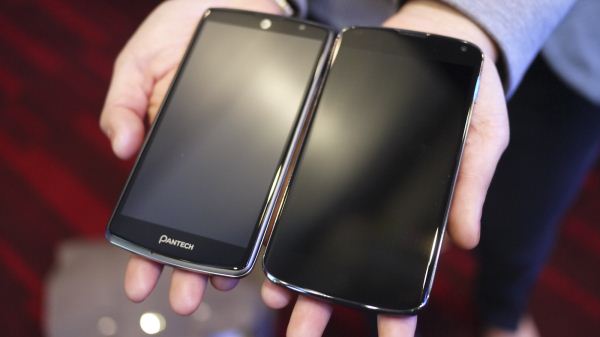
My weirdest meeting was probably with Pantech, who I met with in the Convention Center main concourse and seemed to not have an official presence at CES. Pantech’s main announcement was the Discover, a 4.8” 720p Snapdragon S4 LTE device offered by AT&T for $49 on contract. 
This is Pantech’s first shot at making a really decent Android handset, a device they are hoping will rehabilitate Pantech’s image and relevance in the smartphone age. And really, the Discover isn’t a bad start. It’s based around Qualcomm’s now-ubiquitous MSM8960 chipset with dual-core Krait at 1.5GHz and Adreno 225 graphics, along with an integrated LTE module. The display is a decent 4.8” 720p unit, though not one that will blow you away with colours or viewing angle. Audio and photo performance were emphasized in the design, with stereo speakers that promise to be louder and better than most smartphones. OmniVision’s 12.6MP OV12825 CMOS is the image sensor of choice, capable of 4224x3000 stills, HDR, and 1080p video. Other features include NFC, full VPN and Exchange Active Sync support, a micro-SIM slot, and a removable 8.0 Wh battery. It’s running a lightly skinned Android 4.0, with an update to Jelly Bean promised “soon”.
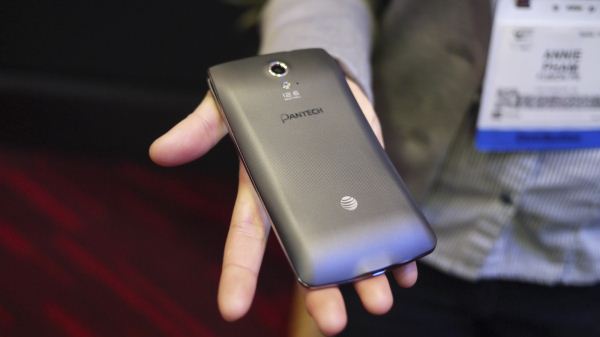
Build quality is actually quite solid, with a pleasing (if dull) industrial design that feels pretty good in hand. The battery cover is a nicely covered piece made with a textured rubber finish and feels more solid than many battery covers I’ve dealt with recently (Galaxy S III and Optimus 4X HD, take a bow). In fact, I’d say the Discover feels better in hand than the SGS3 does, though that isn’t really any worthy distinction since I don’t much care for the SGS3 hardware design. 
The point here is that the Discover is a pretty decent budget mid-range handset. It won’t win any design awards or set any benchmarks on fire, but it hits all the right spec boxes and has a generally pleasant look and feel. The biggest problem that I can see with it is that the HTC One X is currently selling in the same range, and offers a better display, better hardware design, and Android 4.1. Basically, it’s a former top of the line handset selling with internals that are still upper-midrange at a near-budget price. But even so, the Discover is still a good step for Pantech to prove that it can actually compete in the lower regions of the Android world.

More...
-
01-12-13, 02:00 PM #2549
Anandtech: Hands on with Samsung's 2013 Notebook Lineup
A few days before the big show, Samsung announced updates to their notebook line, including a new Series 7 ultrabook and a redesigned Series 7 Chronos. As someone who uses a current-generation Series 7 Chronos in day-to-day life, I was naturally very interested in getting some hands on time with the new notebooks. Advance apologies for the unevenly lit images - Samsung always seems to have a lighting setup designed for the specific purpose of making my life difficult. 

After debuting the Series 5 Ultra at CES last year, Samsung has given it a makeover for 2013, now with a slimmer aluminum chassis and a touchscreen. This is a pretty big improvement from the first Series 5 Ultra, which felt a bit plasticky and had some definite build quality issues. This is a much cleaner design that should be much higher quality - the single piece aluminum interior panel is a great start, with less flex and a more premium feel that’s better matched to the excellent Series 7 and Series 9 notebooks. The keyboard is now backlit, and the S5U continues to be very well equipped in terms of port selection - three USBs (only one of which is USB 3.0), Ethernet, HDMI, DisplayPort, and an optical drive (still tray loading, unfortunately). 

The S5U occupies the midrange segment, with two SKUs at the $749 (i3 ULV/4GB) and $899 (i5 ULV/8GB) price points. In the US, the S5U will be offered with a touchscreen and integrated graphics only, while overseas, a matte-screened non-touch model will be available along with an optional Radeon HD 8750M dGPU. Sadly, resolution is limited to 1366x768. There’s also a range of colours on offer in the US: Ebony Black, Garnett Red, and Pebble Blue, all of which should be familiar from the Galaxy S III. 

The most interesting product at Samsung’s booth for me was the Series 7 Ultra, which is very high on my list for next-notebook-purchase. Why is that? It’s got a 13.3” 1080p PLS touchscreen, Radeon HD 8570M, i5 and i7 ULV processors, SSD-only storage, a full aluminum chassis, a claimed 9 hour battery, and a total weight of 3.25lbs. I’m sold. This is literally exactly what I want in a notebook, it’s like Samsung built a notebook specifically for me. There’s no optical drive, but other than that, the port selection is identical to the S5U. This means, unfortunately, only one USB 3.0 port (disappointing, especially for 2013) - the lone quibble I have with the hardware on paper. As with the previous S7 models, build quality seems to be quite good. The 13” Ultra is meant to take over for the previous 14” Series 7 Chronos in the Samsung notebook lineup, and pricing is expected to be similar or slightly below where the 14” was. 

The updated Series 7 Chronos, too, was something I was pretty interested in looking at. I had my Series 7 on me when I went to the Samsung booth, so I got a pretty good feel for the hardware differences side by side. (It also had a confused Samsung engineer asking where I got the older Series 7 from, since there shouldn’t have been one anywhere on the show floor.) The biggest change here is the 1080p PLS touchscreen panel, and a slight amount of added thickness to go with that. There’s also a matte non-touch display, but that’s only TN and 1366x768 and will likely not be offered in the US. (The previous Series 7 Chronos has a matte TN 1600x900 panel.) 
The excellent backlit keyboard is still there, now in silver instead of black. Graphics have been bumped from the Nvidia GT 640M to the AMD Radeon HD 8870M with a gig of VRAM, and there’s still a 45W IVB i7 quad here, so performance should be pretty solid. The claimed 11 hours of battery seems...unrealistic, but if it’s true, it’ll be absolutely fantastic. There’s 4 USB ports (two USB 3.0), HDMI, VGA, SD, and Ethernet. I’d expect pricing to go up from before, due to the much more expensive panel. 

The Series 9 was also back on the show floor, this time in a couple of new colours - a very MacBook Air-esque silver as well as an impossibly gorgeous pearl white one that I want with every fibre of my being. Having a matte 1080p PLS display (non-touch) also counts as a distinct win in my book. Other than the new display, the Series 9 is exactly as before. The new colours are unfortunately just concepts, but could make it to production if the public response is adequate. 
Gallery: CES 2013: Samsung Notebooks





It seemed like Samsung was keeping most of its mobile announcements for MWC and beyond, so the only new device on hand was the Verizon LTE-enabled Galaxy Note 10.1” tablet. It’s basically identical to the WiFi Galaxy Note 10.1”, except with an MDM9615 baseband and Android 4.1.2. The Jelly Bean update will likely hit the WiFi Note 10.1” soon. The only other Android products on the show floor were the Galaxy S III, Galaxy Note II, and Galaxy Camera, all of which we’ve seen before. 
Availability for all of the new Samsung notebooks is expected to be around March, similar to what we saw last year, while the Note 10.1” should hit Verizon shelves sometime later this month. 

More...
-
01-12-13, 07:00 PM #2550
Anandtech: Hands On with the Parrot Asteroid Smart - a Double DIN Android Head Unit
At my first CES, one of the devices that caught my attention immediately was a slick looking single-DIN head unit running Android called the Parrot Asteroid. One of the things about Android is just how versatile the platform is and all the different places that forked versions of the OS have made their way into. It doesn't take much imagination to see how Android could be potentially disruptive in a car either as an infotainment or navigation system - media compatibility, maps, and a huge application ecosystem pretty much sell the thing. 
Though it's already been announced, one of the products I was most excited to play with at CES 2013 was the original Parrot Asteroid's successor and bigger brother, the double DIN Parrot Asteroid Smart. This is a head unit with 6.2-inch capacitive touch screen running a heavily-skinned and car-tailored version of Android 2.3.7 atop an unnamed TI OMAP(3, maybe 4?) SoC. For connectivity there's 802.11n (no word on 2.4 or 5 GHz) WiFi and Bluetooth 3.0 onboard, likely from some TI Wilink series combo. On the back are three USB 2.0 ports and a fourth for iPods, iPhones, and iPads with 2A charging support. The head unit has audio outs for left, right, and sub, with 4 55 watt outputs. Of course there's compatibility with GPS and steering wheel controls. The rest of the specs are on Parrot's site for the Asteroid Smart. 
I spent a lot of time playing around with the Asteroid Smart since this the kind of convergence device for the car that I've been wanting for some time to replace my own aging head unit. The aftermarket head unit space seems full of strange one-off OSes and platforms and could benefit strongly from a coherent platform message. 
The Asteroid Smart hasn't yet passed Google CTS (Compatibility Test Suite) and thus doesn't yet have GMS (Google Mobile Services) approval to use Google Apps or the Play Store, although I'm told that Parrot is working to make this happen if at all possible. In the meantime, they've created an application marketplace of their own called the Asteroid Market to showcase and sell applications designed to be used with the Asteroid lineup and the decidedly different UI requirements for a car versus a phone. The news out of Parrot about Asteroid for this CES is the unveiling of a developer portal and SDK for building apps and getting them on the Asteroid Market. 
I played with the Asteroid Smart a lot and came away pretty impressed with the device, though there are some caveats. All controls are exposed through the UI on the Asteroid Smart, there are no physical volume buttons or toggles, other than a power on button and faceplate eject button. There's no CD input, though I've lived without a CD player in my car with my current head unit for long enough to know that isn't impossible — instead media will come from an attached USB storage device, on an SD card, or from attached smartphone. I suppose the lack of physical buttons is mitigated by the compatibility with steering wheel buttons, but I could imagine the two-tap volume change UX to be a possible problem. Although it runs 2.3.7, the UI felt smooth and performant basically everywhere, swiping through menus, changing media, and in the custom launcher. Oddly enough Parrot has crafted a UI that looks suspiciously like 4.x atop it — I just wish it was Android 4.x to begin with instead of 2.3.7, but thankfully there's still enough application compatibility that this shouldn't be a huge problem. There's also the normal Android launcher buried inside if you look for it, along with browser and a maps application that uses Google's map tiles.
Again, Parrot can't bundle the Google Maps application until they've obtained a GMS license, but for now they're getting around that by bundling a stripped down version that just uses the APIs in Android. There's also a microUSB port on the back for sideloading applications, which I'd imagine is something users would do who actually want Google Apps regardless of GMS approval. Parrot is targeting a price around 599USD for the Asteroid Smart with availability early 2013. 
If nothing else, this is the kind of convergence device that really interests me and seems to be a major theme of CES. We have connected cameras now, why not connected cars and head units?
Gallery: Hands On with the Parrot Asteroid Smart - a Double DIN Android Head Unit






More...
Thread Information
Users Browsing this Thread
There are currently 24 users browsing this thread. (0 members and 24 guests)







 Quote
Quote
_575px.jpg)
_575px.JPG)
_thumb.JPG)
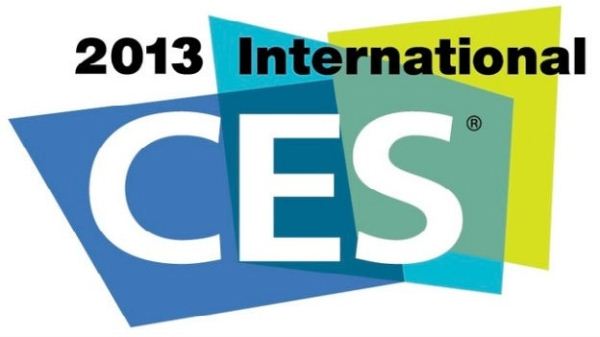

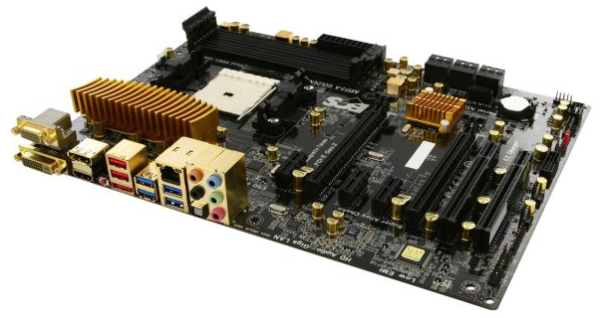
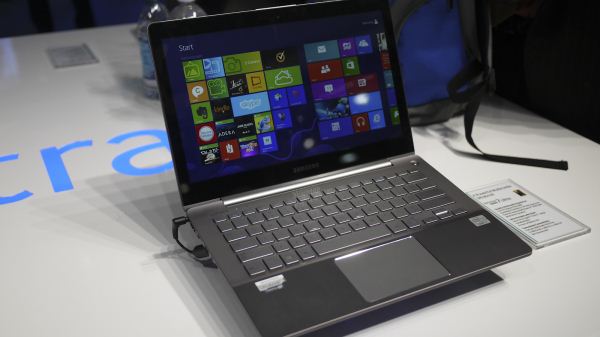
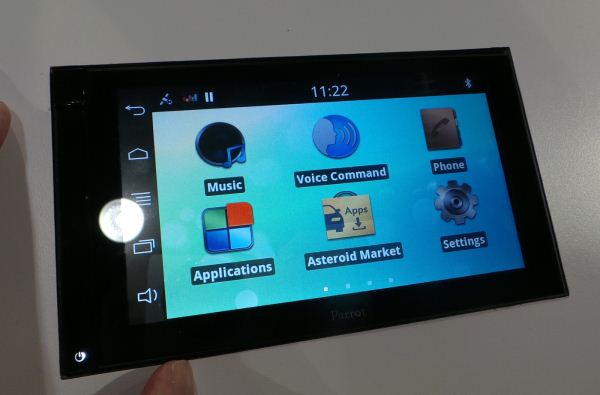
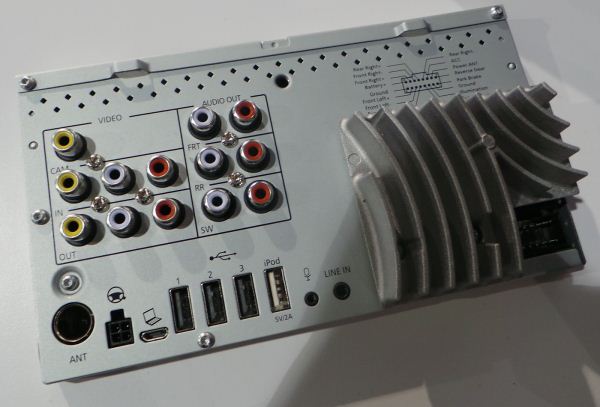

















Bookmarks